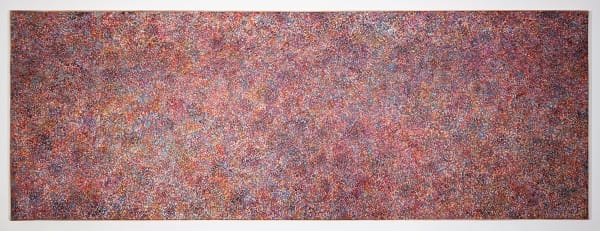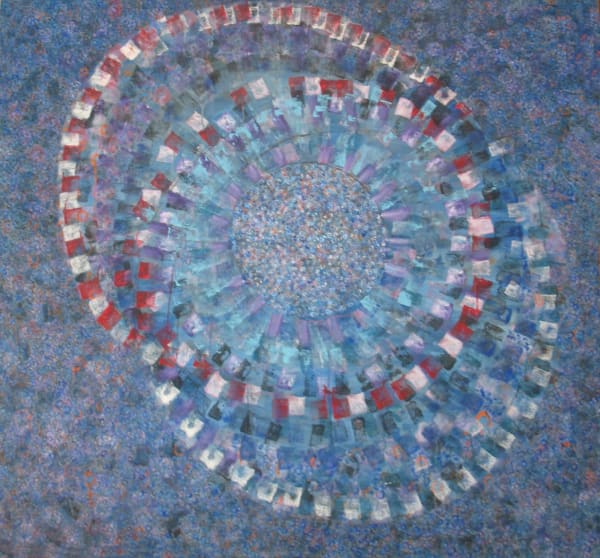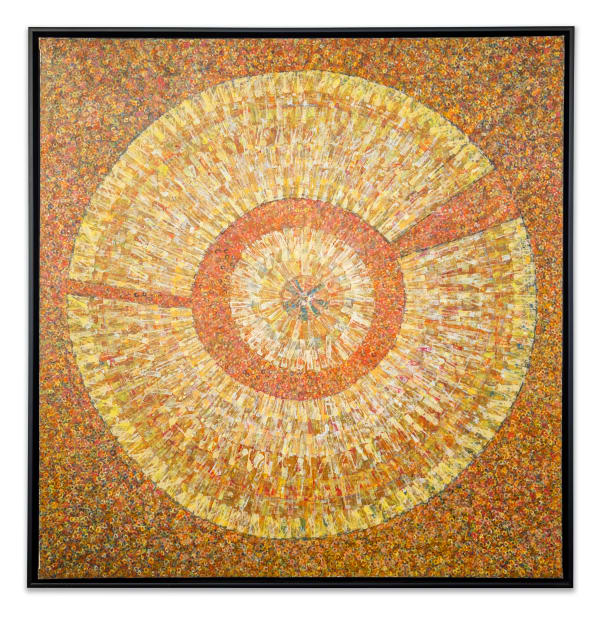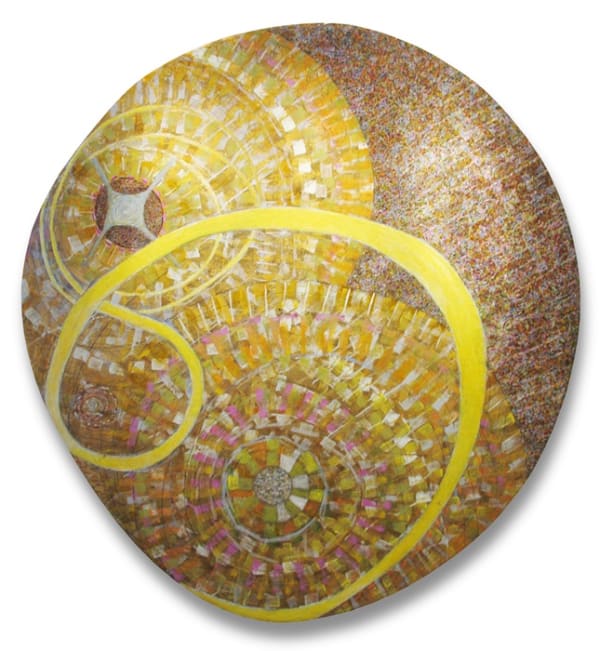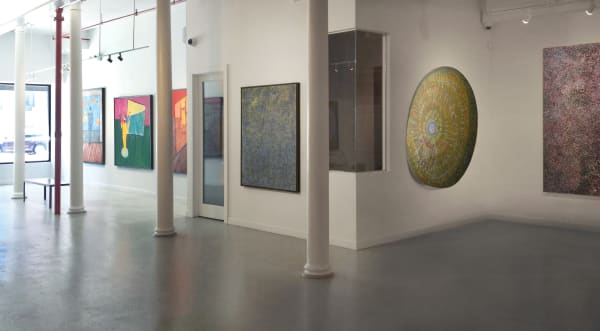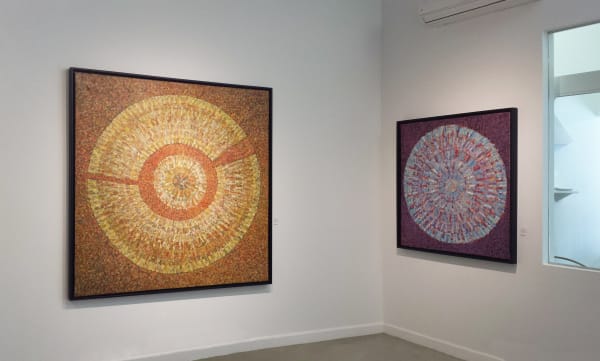James Juthstrom: Paintings from the Loft
-
 James Juthstrom, Untitled #090, circa 1980s
James Juthstrom, Untitled #090, circa 1980s -
 James Juthstrom, Spinning Worlds, circa 1970s
James Juthstrom, Spinning Worlds, circa 1970s -
 James juthstrom, untitled [gold], circa 1960s Untitled
James juthstrom, untitled [gold], circa 1960s Untitled -
 James Juthstrom, Little Blue Moon, circa 1970s
James Juthstrom, Little Blue Moon, circa 1970s
-
 James juthstrom, untitled #54, circa 1960s
James juthstrom, untitled #54, circa 1960s -
 James juthstrom, untitled #55 [violet], circa 1960s
James juthstrom, untitled #55 [violet], circa 1960s -
 James Juthstrom, Yellow Centering, circa 1970s
James Juthstrom, Yellow Centering, circa 1970s -
 James juthstrom, untitled #123, circa 1960s
James juthstrom, untitled #123, circa 1960s
-
 James juthstrom, untitled #39, circa 1960s
James juthstrom, untitled #39, circa 1960s -
 James juthstrom, untitled #69, circa 1960s
James juthstrom, untitled #69, circa 1960s -
 James juthstrom, untitled [magenta], circa 1960s
James juthstrom, untitled [magenta], circa 1960s -
 James juthstrom, untitled #99, circa 1960s
James juthstrom, untitled #99, circa 1960s
-
 James Juthstrom: Paintings from the Loft | Installation View
James Juthstrom: Paintings from the Loft | Installation View -
 James Juthstrom: Paintings from the Loft | Installation View
James Juthstrom: Paintings from the Loft | Installation View -
 James Juthstrom: Paintings from the Loft | Installation View
James Juthstrom: Paintings from the Loft | Installation View -
 James Juthstrom: Paintings from the Loft | Installation View
James Juthstrom: Paintings from the Loft | Installation View -
 James Juthstrom: Paintings from the Loft | Installation View
James Juthstrom: Paintings from the Loft | Installation View -
 James Juthstrom: Paintings from the Loft | Installation View
James Juthstrom: Paintings from the Loft | Installation View -
 James Juthstrom: Paintings from the Loft | Installation View
James Juthstrom: Paintings from the Loft | Installation View -
 James Juthstrom: Paintings from the Loft | Installation View
James Juthstrom: Paintings from the Loft | Installation View -
 James Juthstrom: Paintings from the Loft | Installation View
James Juthstrom: Paintings from the Loft | Installation View -
 James Juthstrom: Paintings from the Loft | Installation View
James Juthstrom: Paintings from the Loft | Installation View -
 James Juthstrom: Paintings from the Loft | Installation View
James Juthstrom: Paintings from the Loft | Installation View -
 James Juthstrom: Paintings from the Loft | Installation View
James Juthstrom: Paintings from the Loft | Installation View
WESTWOOD GALLERY NYC was pleased to present a retrospective of downtown artist James Juthstrom (1925-2007). The exhibition focused on the duality of the artist, who created both large-scale, cosmic abstract paintings and enigmatic figurative paintings. On view was a curated review of 12 paintings from the 1960s through the early 1980s, as well as works on paper.
Trained at the Brooklyn Museum School of Art in the 1950s, Juthstrom studied life drawing and explored the rendering of form through line. These early drawings exhibit his impressive ability to depict movement with precision and elegance. After moving to a sixth floor walk-up loft on Broome Street, Juthstrom began creating complex metaphysical paintings on canvas. Throughout the 1960s and 70s, Juthstrom spent countless hours painting an infinite maze of colored circles on rectangular or elliptical hand-made stretchers. After years of experimentation in creating the ‘perfect circle’, he found q-tips worked better for him than a paint brush.
The abstract paintings were meditative and rhythmic, calling on the viewer to connect on a subconscious, spiritual level. He applied cryptic patterns and hidden formations, sometimes visible only under light, revealing his fascination with the cosmos, mathematical formulas and biology. His process was focused, spending months on one painting and sometimes over a year on larger work. Because he did not have a commercial outlet, his artwork was a pure form of creation. His trade as an electrician provided a sparse means of support mainly assisting artists with lighting in their studio.
This period also marks Juthstrom’s burgeoning interest in reflective pigments and their effect on the overall composition, evocative of Byzantine mosaics or the gold paintings by Klimt. As Valerie Gladstone wrote in an ARTNEWS review, throughout his career, “Juthstrom’s work was informed by the New York School, by Abstract Expressionism, and by the color-field painters, as well as by artists like Milton Avery, with his emphasis on form and color, and Mark Tobey, and his mystical Orientalism.”
In the 1970s, the first idiosyncratic depictions of his loft and the anonymous figures populating the deserted indoor spaces appear, providing a unique psychological portrayal of an artist who formally severed ties with the world of commercialism. These paintings depict the interior of the artist’s studio, with emphasis on the slanted floorboards and the haunting, often reflected figures. As Juthstrom became more isolated he found solace in exploring other visual dimensions in his own loft. The infinite space of his cosmic paintings is now concentrated in the single rooms depicted in the figurative work.
James Juthstrom was critically acknowledged early in his career and was included in numerous museum group exhibitions, including at The Whitney Museum of American Art, The Pennsylvania Academy of Fine Arts, Detroit Institute of Arts, and the Brooklyn Museum. He had several solo gallery exhibitions, including Gallery G in New York, which received a review in the New York Times, Paul Schuster Gallery in Cambridge, MA, and Landmark Gallery in New York. Although he had opportunities for gallery representation, he withdrew from the artworld and created work in the privacy of his loft, through intensive solitary effort seen as a spiritual pursuit. He died in May of 2007, leaving behind a legacy of dedication, experimentation, and relentless pursuit of the purity of expression. Since the release of his estate collection, museums and collectors are reviewing the artwork for acquisition and discovering the history of this brilliant artist.
WESTWOOD GALLERY NYC exclusively represents the artwork from the Estate of James Juthstrom (1925-2007).
